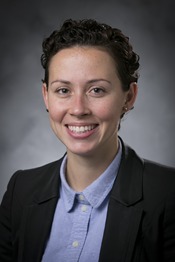Program Information
Feasibility of a Web-Based Monte Carlo Simulation Tool for Dynamic Electron Arc Radiotherapy (DEAR)
A Rodrigues1*, D Sawkey2 , Q Wu1 (1) Duke University Medical Center, Durham, NC, (2) Varian Medical Systems, Palo Alto, CA
Presentations
SU-G-BRC-10 (Sunday, July 31, 2016) 4:00 PM - 6:00 PM Room: Ballroom C
Purpose: DEAR is a radiation therapy technique utilizing synchronized motion of gantry and couch during delivery to optimize dose distribution homogeneity and penumbra for treatment of superficial disease. Dose calculation for DEAR is not yet supported by commercial TPSs. The purpose of this study is to demonstrate the feasibility of using a web-based Monte Carlo (MC) simulation tool (VirtuaLinac) to calculate dose distributions for a DEAR delivery.
Methods: MC simulations were run through VirtuaLinac, which is based on the GEANT4 platform. VirtuaLinac utilizes detailed linac head geometry and material models, validated phase space files, and a voxelized phantom. The input was expanded to include an XML file for simulation of varying mechanical axes as a function of MU. A DEAR XML plan was generated and used in the MC simulation and delivered on a TrueBeam in Developer Mode. Radiographic film wrapped on a cylindrical phantom (12.5 cm radius) measured dose at a depth of 1.5 cm and compared to the simulation results.
Results: A DEAR plan was simulated using an energy of 6 MeV and a 3x10 cm² cut-out in a 15x15 cm² applicator for a delivery of a 90° arc. The resulting data were found to provide qualitative and quantitative evidence that the simulation platform could be used as the basis for DEAR dose calculations. The resulting unwrapped 2D dose distributions agreed well in the cross-plane direction along the arc, with field sizes of 18.4 and 18.2 cm and penumbrae of 1.9 and 2.0 cm for measurements and simulations, respectively.
Conclusion: Preliminary feasibility of a DEAR delivery using a web-based MC simulation platform has been demonstrated. This tool will benefit treatment planning for DEAR as a benchmark for developing other model based algorithms, allowing efficient optimization of trajectories, and quality assurance of plans without the need for extensive measurements.
Contact Email:

